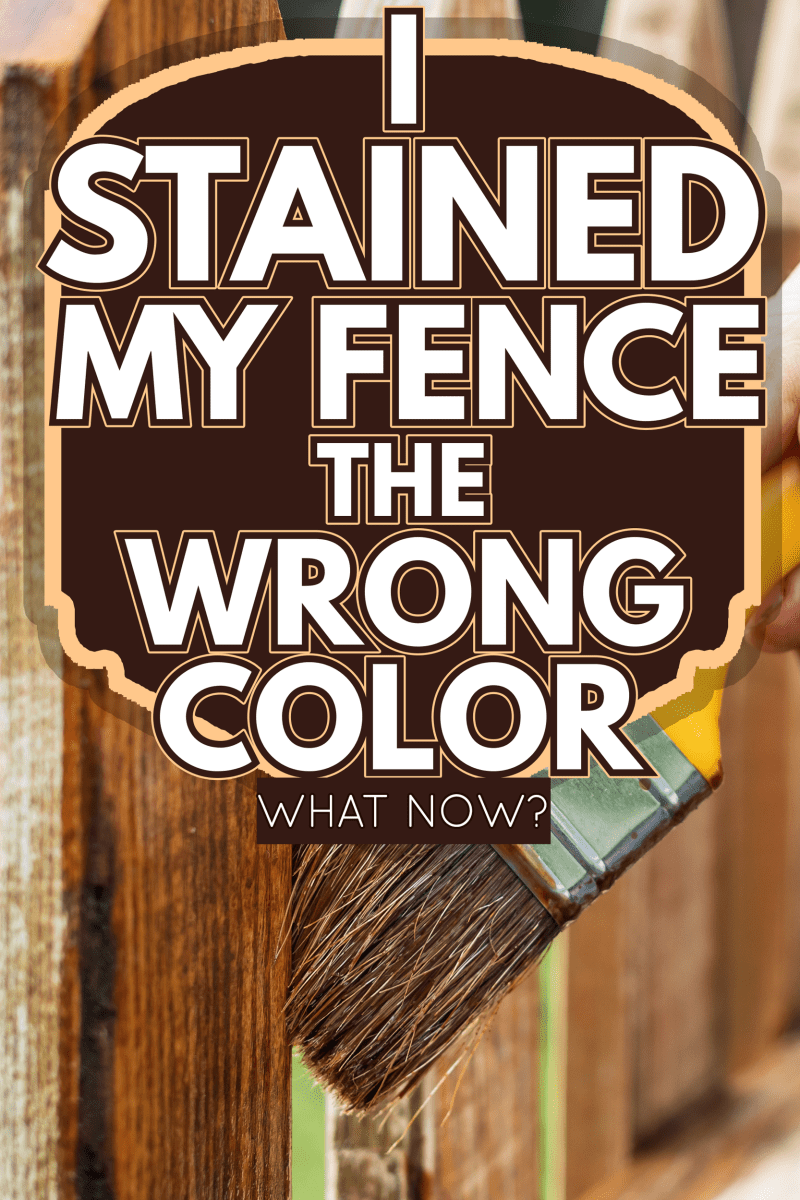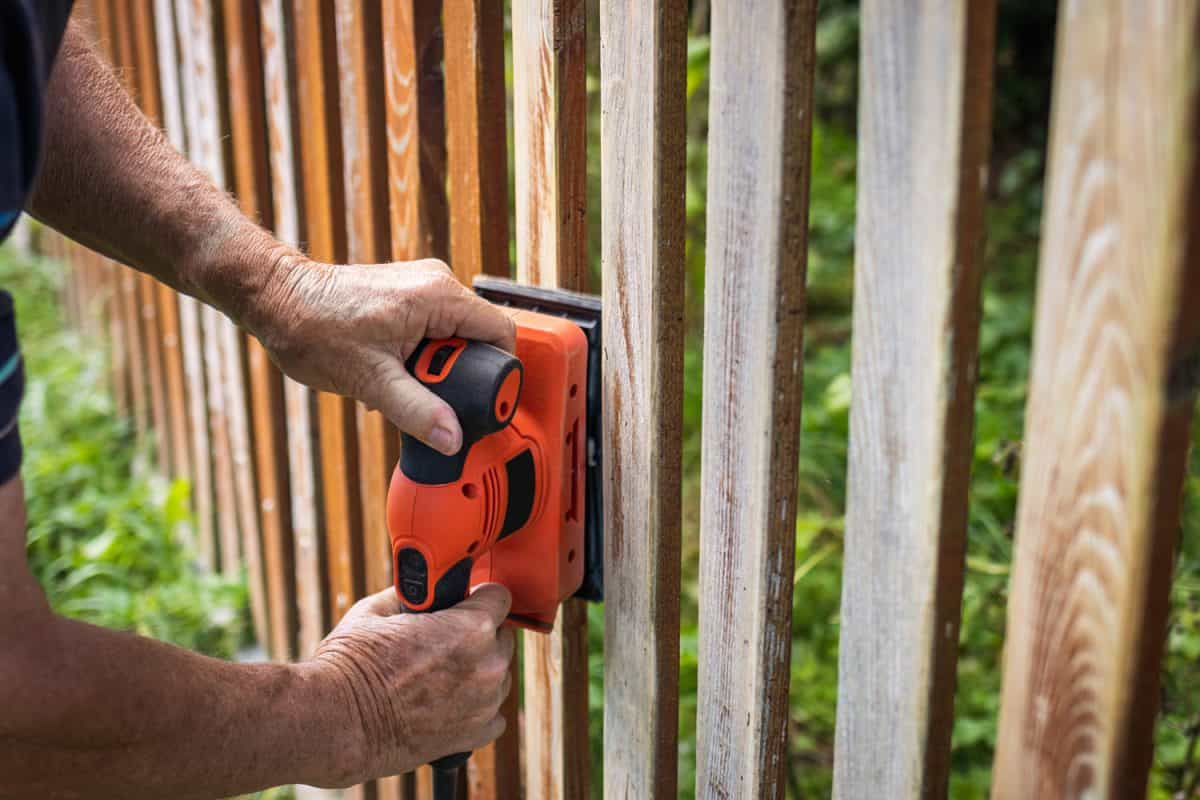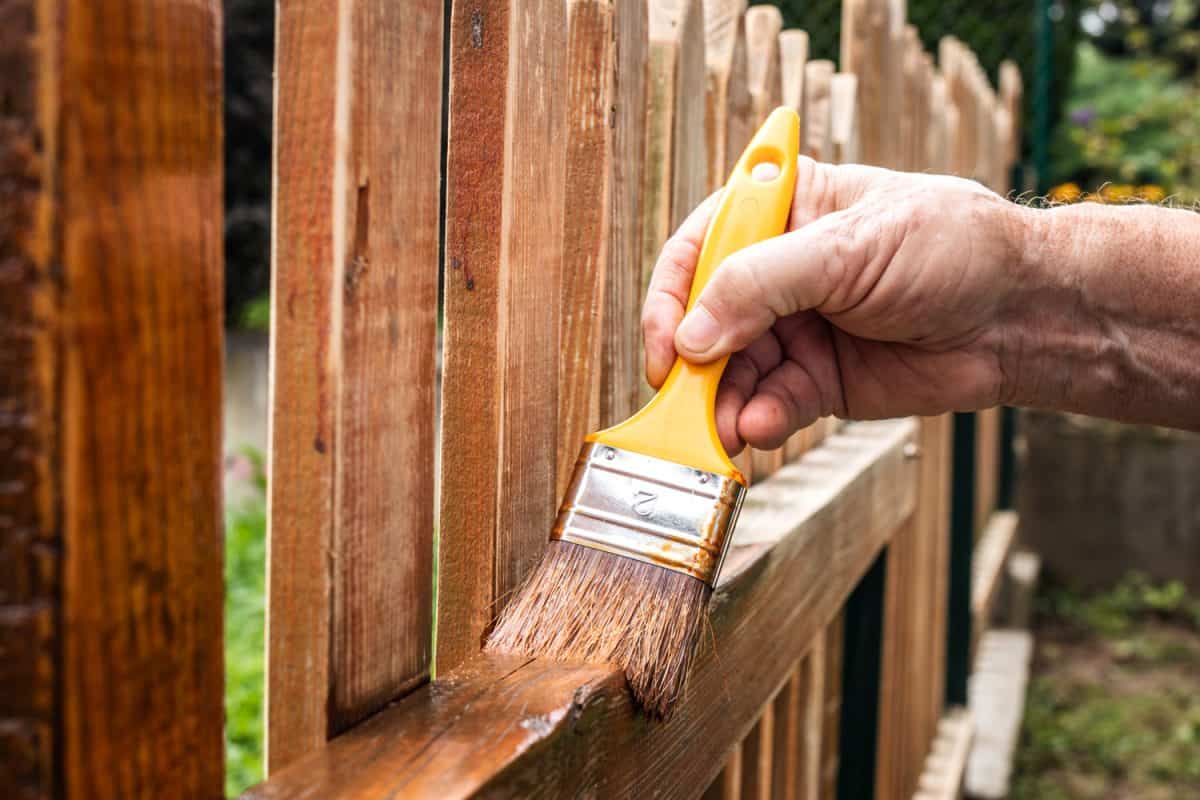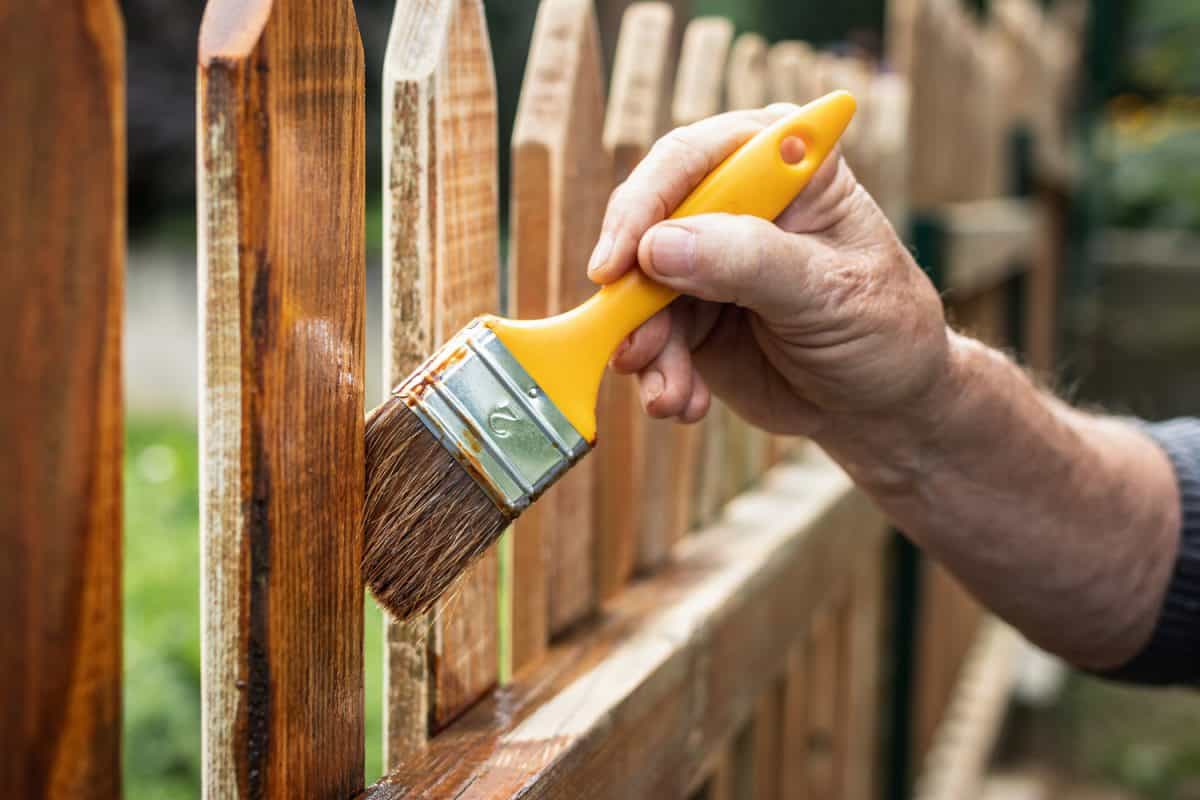It happens all the time; you stain your fence a particular color, only to dislike it later. Whatever the reason, what do you do after this? Well, let’s find out. We researched on your behalf to provide you with the following answers.
If you’ve just stained your fence the wrong color, there are several things you can do to solve this problem, which includes:
- Stain a darker color
- Sand down your fence
- Wood-strip or bleach your fence
- Paint over the stain
You can correct the wrong color you initially stained your fence. Keep reading to know how you can solve this issue, how to choose a stain color to avoid repeating the job, and how much it costs.

What To Do When You Stain Your Fence The Wrong Color
There are several reasons you would want to change your fence color after staining it. The color could look different from what you expected, or it makes your yard look dull, or the color does not match the rest of the fence, among other reasons.
The following are ways you can change the stain color of your fence.
Stain A Darker Color

You can change the color of your fence if you stained it with the wrong color by using a solid finish or a darker shade. If it is too pale, you have a variety of heavy-transparent colors to choose from. You can go for brown, deep gray, or black and blue, to name a few.
To achieve this, do a test. Take a piece of wood similar to the one on your fence. But, if you cannot find any, look for the most unnoticeable part of your fence that is not stained.
Apply the stain color similar to the one you first applied to your fence. Afterward, apply the second stain color you intend to use. If you like it, you can use it.
Ensure, however, that you use the same type of stain as the previous one. If you used a water-based wood stain, use the same one for the whole fence. The same goes for oil-based; use this for the subsequent coats as the first one. If you mix the two, you might not achieve a well-stained fence.
Also, as per the instructions in the manual, before applying the second and subsequent coats, you may have to sand your fence lightly. Follow by staining 1 foot at a time and wiping off as you finish applying.
It prevents an uneven look and the formation of dried stain lines. For the stain to dry properly, work on a day when the weather is dry.
Sand Down Your Fence

Sanding down your fence will help remove most of the color left by the previous stain. The wood is now able to absorb the next stain much better, resulting in a neat, richly colored fence. However, it can be time-consuming.
Have a look at this sander on Amazon.
Therefore, it would be good to use a hand-held Teccpo sander like the one shown above, which can get more done in a shorter time than sanding by hand. If you have never sanded down your fence before and to know the amount of pressure to apply, begin with one fence post.
Have a look at these assorted grit sandpaper on Amazon.
You can load your sander with medium-grit sandpaper from an assorted pack like the one shown above to sand the post. Next, use a sandpaper block to get to the nooks and crannies or to ensure you go over the areas you might have missed. Now, you are ready to apply a fresh coat of stain.
Wood-Strip Or Bleach Your Fence
If the stain is too dark, you can use wood stripper or bleach to remove it and apply a new one. If you choose to use a wood stripper, follow the instructions in the manual.
Thoroughly apply the stripper on your fence, ensuring you do not miss any area. As soon as you apply, you are likely to see the stain begin to dissolve. However, use a steel bristle brush to remove the stain color if it is still stuck to the wood.
If you choose to use bleach, mix 1-gallon of water and 1-quart of bleach in a bucket. Pour it into a handheld garden sprayer, which is better than using a power sprayer that can be too strong for the wood and cause it to splinter.
First, wet your fence using a garden hose, then spray the bleach solution one fence post at a time from the top downwards. Let the bleach solution remain on the wood for 5 minutes and rinse with water using your garden hose.
If some parts of your fence still have a stain, spray the bleach solution only on those parts. If it will not come off, scrub the affected area using a bristled brush, and rinse with water.
Below is a video that shows how to spray bleach solution on a fence:
Paint Over The Stain

You can paint over the stain color on your fence, if you are dissatisfied with it. But, first, you have to clean it to remove the stain. As explained earlier in this post, you can clean it by sanding and applying the paint.
Also, as explained above, you could clean it using a wood stripper or bleach to remove the stain and then apply the paint of your choice to achieve the color you desire. Before painting, use a primer for the paint to adhere adequately to the wood.
How To Avoid Using The Wrong Stain Color The First Time
How do you choose the right stain color for your fence that you will not regret? Picking the wrong color could be due to several reasons, such as mistakenly not picking the right color, not testing the color, or the color looking different from how it looks when in the store.
As you consult with a professional, the following are some tips on how to pick the right color the first time to avoid repeating the job:
Match The Stain Color With Your Wooden Structures In The Yard

One of the most common complaints with staining a fence is that it does not match the other structures in the yard. To pick the right color, keenly look at the color of those structures such as the deck, gazebo, pergola, wooden furniture, and the shed.
If you cannot match the stain color of your fence with the structures in your yard, you can use a contrast color but one that complements perfectly.
Also, stains fade with time. If you would not like to see a faded fence, you can choose less intense color. Bright colors will fade and look different from the other structures in your yard. For example, your fence can fade and look different from your pergola.
To solve this, use a lighter color that will not significantly look faded and look different from the rest of your yard.
Test The Stain Color
The color of the stain can look different when applied to your fence. For example, your fence can look brighter if it is light blonde. The same stain will appear darker when applied to a fence that has a reddish undertone. This is why you need to test it before purchasing the stain.
Consider The Lighting
It’s important to know what a color looks like when under different lighting. For example, if your fence is under direct sunlight, the stain will looking too bright, and when it is under a shade it may just be the perfect color.
Consider Color And Size Of Structures
A fence can look outstanding when stained with a light color, especially with grass around. The light color would still appear to have a different shade with trees nearby. Yet, a darker fence will look more sophisticated and stand out.
Consider these points when choosing the right stain color for your fence.
Check With Neighborhood Associations
If you live in an area governed by a neighborhood or homeowner’s association, you may need to find out the guidelines they have in place regarding the colors to use. Some may need to approve the color you choose, while others could have already identified the colors to use.
Yet other associations may not have any guidelines on the stain color to use. Although, you are better off consulting with them because the fines can be hefty.
Cost Of Staining A Fence

A gallon of stain costs $24, while a gallon of paint costs $36. The total cost of stain or paint you will use will depend on the size of your fence. Generally, one gallon of stain can cover 160 square feet of fence, and one gallon of paint can cover 200 square feet.
If a professional does the job for you, you will spend $8 per linear foot or $1.50 per square foot. This quote includes preparing the surface of your fence, and removing vegetation and debris that would get in the way of completing the job well.
In Closing
Staining your fence brings life to your yard. But, sometimes you can stain the wood a color that you later don’t like and decide to change it. You have several options to choose from to solve this issue.
And, wouldn’t it be better to use the right stain color the first time you stain your fence? Yes, it would be. Talking to a professional will greatly help, but you can also benefit by learning some tips on picking the right color.
You may want to read our post on which privacy fence is most durable: "What Type Of Privacy Fence Lasts The Longest?"
Also, which is better for your fence, paint or stain? Click here: "Sealing Wood Fencing: Paint Vs. Stain."




![Close board fence erected around a garden for privacy with wooden fencing panels, concrete posts and kickboards for added durability, Are Gravel Boards Treated? [And How Long Do They Last]](https://fencefixation.com/wp-content/uploads/2022/06/Close-board-fence-erected-around-a-garden-for-privacy-with-wooden-fencing-panels-concrete-posts-and-kickboards-for-added-durability-600x400.jpg)
![Wooden fence with green lawn and trees, Stepped Vs. Racked Fence Installation [Where & How To Use Each]](https://fencefixation.com/wp-content/uploads/2022/06/Wooden-fence-with-green-lawn-and-trees-600x400.jpg)